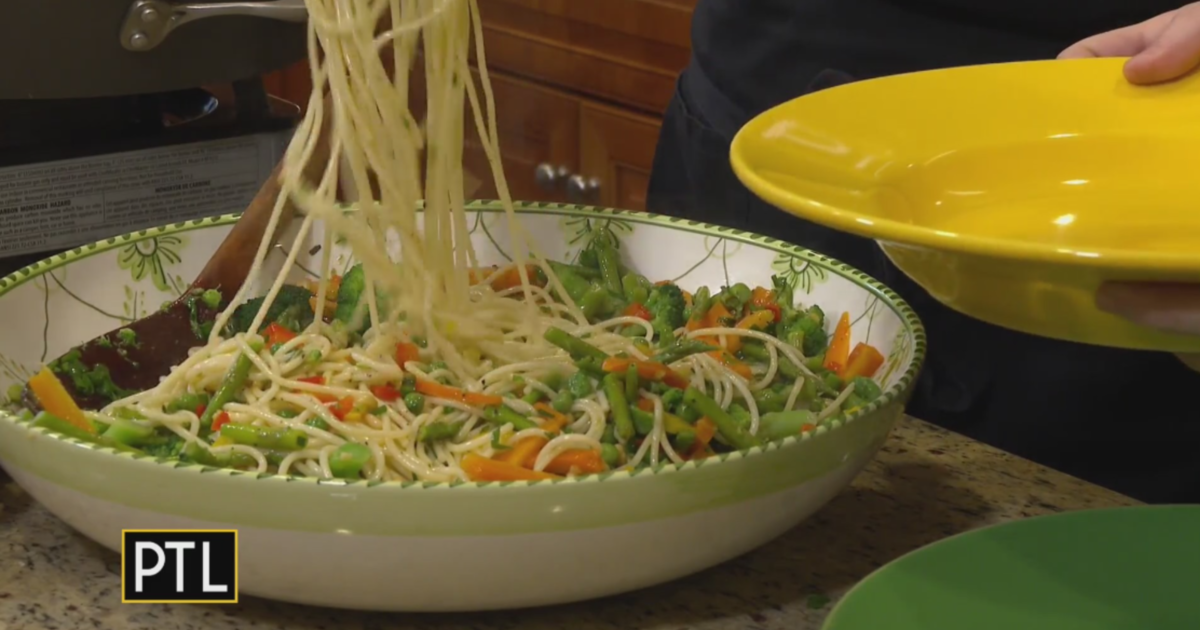Chef Bill Fuller: Roasted Breast & Leg of Duck, Winter Vegetables
This week, Chef Bill Fuller, of big Burrito Group, stops by the Pittsburgh Today Live kitchen to make a delicious dish perfect for your holiday dinner table.
Roasted Breast and Leg of Duck with Winter Vegetables in Miso Butter
Serves: 4
You can purchase very good duck leg confit at specialty grocery stores, as well as individual duck breasts. However, a lot of grocery stores now sell whole ducks, and it's not a big deal to ask the butcher to remove the legs and the boneless breasts. Take home the carcass and make a little stock, too. Or if you are adventurous, butcher your own duck. Directions for cutting up the duck, making stock, and braising the legs are at the end of the recipe.
Once you get the feel for rendering the breasts, duck cookery becomes quite accessible. Be patient. Duck does not have to be fatty! Nor tough. Nor dry. With patience and love it is a delicious meat and an excellent meal. Resist the urge to cook a whole duck. The breast and leg meats are so completely different it is very difficult to cook them together and get excellent results. Legs need long cooking, breasts to just medium.
4 ea. Braised Duck Legs (or Confit Legs)
4 ea. Duck Breasts
2 Tbs. Reserved duck fat (or oil or butter)
1 ea. Celery root, peeled and diced
2 ea. Small Japanese sweet potatoes (or one regular), diced
½ # Cippolini onions, peeled
1 # Brussels sprouts, outer leaves removed and saved (keep remainder for another use)
Thyme sprigs
Salt and pepper
1 C. Duck Stock
1 Tbs. White miso
2 Tbs. Whole butter
1. Prepare legs. While legs are cooking, prepare the rest of the elements of the recipe.
2. Trim duck breasts. Cook and render as directed below. Reserve warm.
3. Heat a wide skillet over medium heat. Add duck fat/oil. Add Celery root, sweet potatoes, and cippolinis. Brown with tossing over medium heat until all sides are well browned and vegetables are tender inside. Season well with salt and pepper. Remove. Keep warm
4. Add Brussels sprouts leaves, thyme sprigs, and stock to pan. Bring to a quick boil.
5. Stir in miso and butter. Adjust seasonings.
6. Slice breasts into eight to ten slices across the grain.
7. Place pile of roasted vegetables in the center of the plate. Prop leg against vegetables.
8. Fan breast against leg.
9. Spoon Brussels sprouts leaves over dish. Drizzle with sauce.
Leg Cooking:
1. Season both sides of leg with salt, pepper, and chopped fresh thyme. If you have fresh bay leaves, lay one against the flesh side of each leg. Lay skin side up in shallow baking pan. Allow to marinate overnight.
2. Drain any liquid that comes off the legs.
3. Place in 375 degrees oven and cook until skin is lightly browned, about 45 minutes. Pour off rendered fat and reserve for another use.
4. Add enough stock to half cover leg (about up to the skin) and return to oven. Reduce temperature to 325 degrees and cook until very tender, about an hour. (If stock nearly reduces dry, replenish with a little water or stock. When done, leg should be glazed by the stock and very tender.)
5. Remove and reserve. Do not discard braising liquid. Save to add to stock pot or use as stock elsewhere.
Breast Cooking:
1. Score skin at 1/8" intervals. Do not cut through to meat. Cross hatch scoring.
2. Heat an iron skillet on medium heat. Season breasts with salt and pepper. Place skin side down and cook slowly, rendering the fat. Pour off fat as it accumulates, reserve.
3. When skin is browned and crispy and has begun to shrink from the edges of the breast meat, turn breast and cook to desired temperature – medium is best.
4. Remove from skillet and allow to rest for 10 to 15 minutes.
Fat Rendering:
1. Place all skin and fat trimmings into a pot. Cover with water.
2. Bring to a boil, reduce to a simmer, and cook until nearly all water is evaporated.
3. Strain and reserve fat.
Duck Butchery:
1. Clean out duck cavity. Reserve heart, gizzard, and neck. If desired, reserve liver for a separate use.
2. Lay duck on back. Cut skin between leg meat and breast meat. Follow skin along edge of leg meat down to back. Turn duck onto breast.
3. Cut around 'oyster' of the muscle where the thigh attaches to the hip and break leg free of body at joint. Follow bone with your knife to the back of carcass. Repeat on other leg. Trim fat on legs to fit meat. Keep trimmings to render (see below).
4. Place duck on back with head end towards you. Make two cuts the length of the breastbone and gently pull meat back. With your boning knife, follow wish bone down either side of the neck cavity.
5. Turn duck tail towards you. Finish freeing breast from ribcage and wishbone.
6. Place breasts skin side down. Trim around breast to edge of meat. Trim flat tendon off meat. Keep fat trimmings to render (see below).
7. Turn breast over. Score evenly in a1/4" checkerboard pattern cutting into but not through skin.
Duck Stock:
1 Duck Carcass
1 large onion, chopped
1 carrot, copped
2 stalks celery, chopped
1 head garlic, split
1 tsp. Black peppercorns
1 bay leaf
2-3 Sprigs fresh thyme
1. Trim excess fat from carcass. Place carcass, neck, and organs on a sheet pan. Place in 450° oven. Roast until bones are well browned.
2. Drain fat (reserve) and place bones into stockpot. Place onions, carrots, and celery onto sheet pan and return to oven. Brown well.
3. Place garlic and herbs in pot. Add browned vegetables. Cover with cold water and place on stove.
4. Bring to a boil and reduce heat to a minimal simmer. Skim off all fat and foam. Cook at least 4 hours, preferably overnight.
5. When done, skim fat and strain stock through a coarse mesh strainer. Strain again with a fine mesh strainer. Discard bones
Duck Jus:
1. Place duck stock in a straight-sided pot that accommodates stock with about an inch to spare. Place on burner and bring to a boil.
2. As stock comes to a boil, skim off fat and foam. Reduce to a low boil.
3. As soon as the stock has reduced enough to fit into the next sized straight-sided pot, strain through a fine-mesh strainer into that pot.
4. As soon as it comes to a boil, skim scrupulously. Repeat procedure until stock becomes thickened. When nearly sauce consistency, add ¼ C. sweet white wine (Riesling or Gewürztraminer) and continue reducing.
5. At sauce consistency, place 1 tsp. microplane grated ginger and four diced figs into sauce. Stir in 1 Tbsp whole butter.



